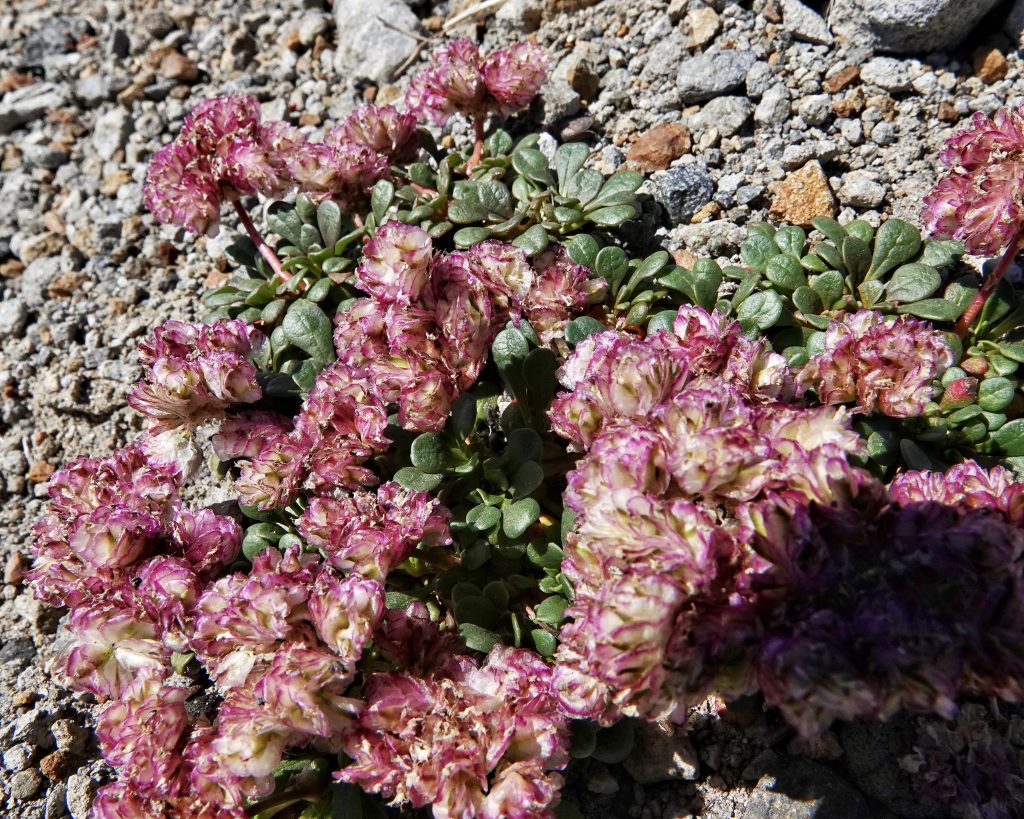
I found these members of Montiaceae (miner’s lettuce family, although until 15 years ago they were considered to be part of Portulacaceae) on my visit to Mt St Helens a few weeks ago. I thought at the time they were Mt Hood pussypaws (also know as pussytoes and common pussypaws), but when I went to confirm that I found things saying that Calyptridium umbellatum had a single inflorescence for each rosette, but that C. monosperma had multiple inflorescences per rosette. My impression had been that these plants had multiple inflorescences. But C. monosperma isn’t found in our region north of the Siskiyous.
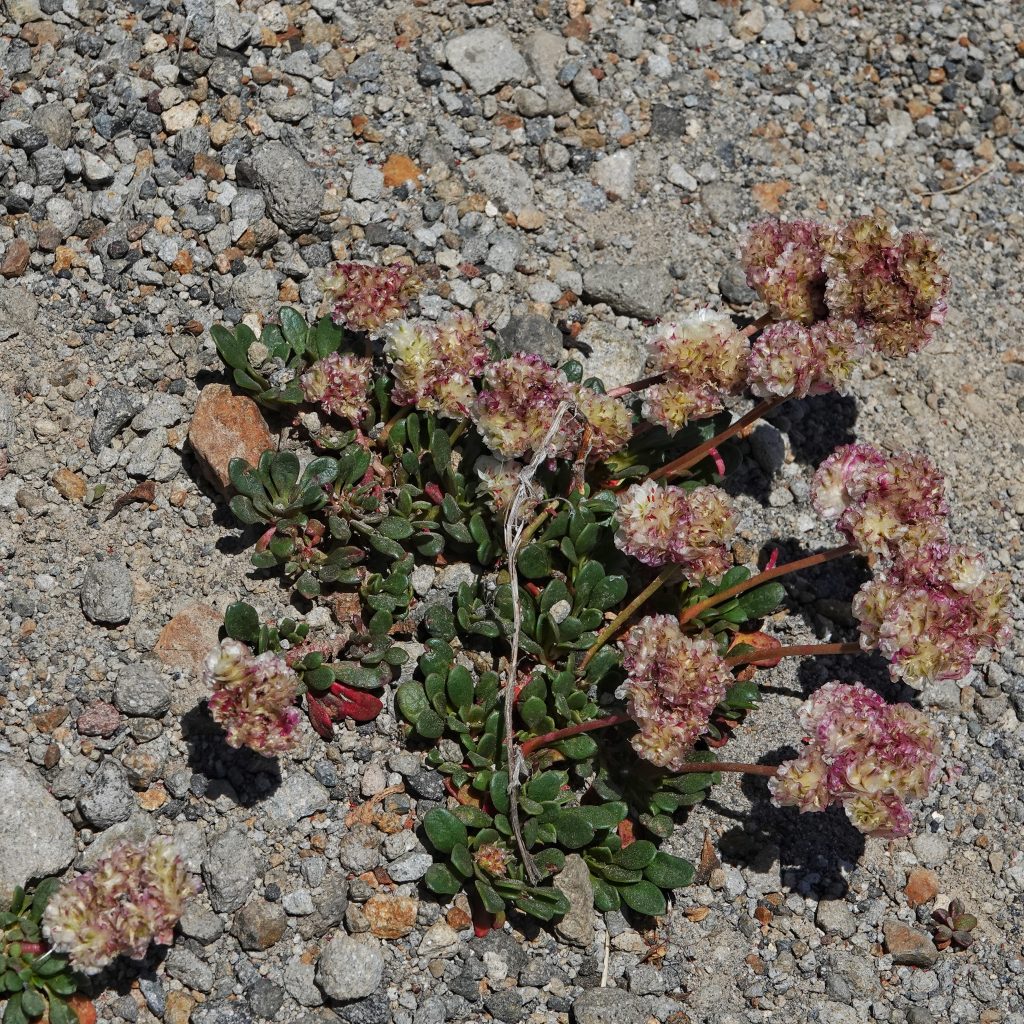
Finally I went back and re-examined my photos, and realized that what I was thinking were single large rosettes were actually large groups of single rosettes, each of which (when they had flowers) had only a single inflorescence. So, mystery solved, and I am now confident that these are what folks in our region usually call Mt. Hood pussypaws (Calyptridium umbellatum).
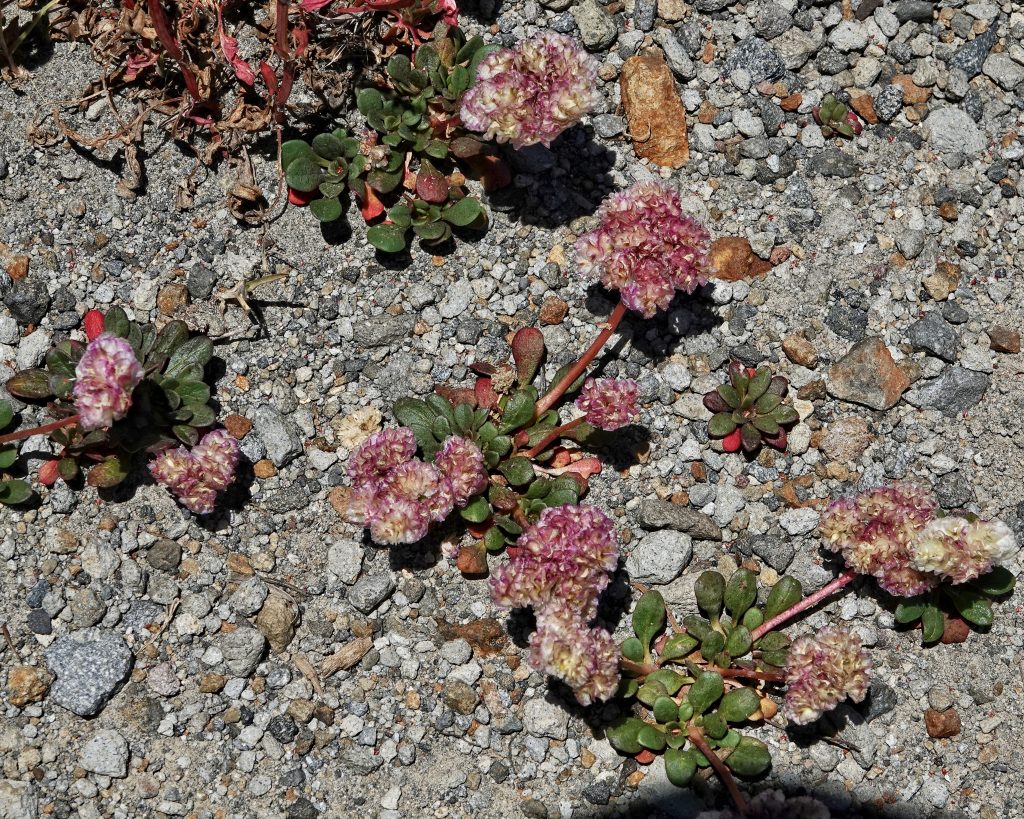
There wasn’t any information that I could find as to their ethnobotanical uses, nor could I find anything relating to what animals eat them. But I did run into an interesting paper (Hinton; 1976) where he talks about them apparently having a rather unpleasant odor and being primarily pollinated by butterflies and flies at lower elevations, and almost exclusively by beetles at higher elevation.
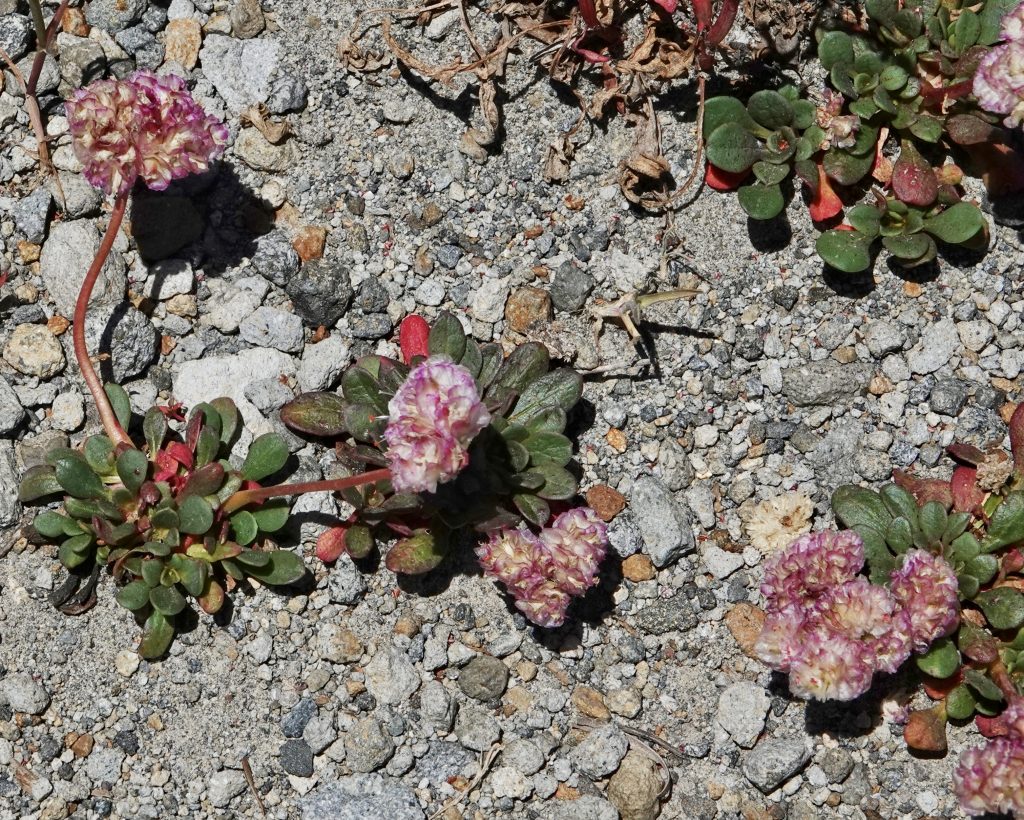
The real kicker was that, whereas most plants utilize insect pollination to prevent self fertilization, C. umbellatum relies on it to self fertilize, and only infrequently sets seed by wind pollination. And the preference for self fertilization seems indicated by abundant nectar, so that the insect may become sated without leaving the umbel, and the fact that their tall, heavily pollen coated anthers are in close proximity to a wide stigma, to go along with the density of the inflorescence and the fact that the stigma and anthers mature at the same time.
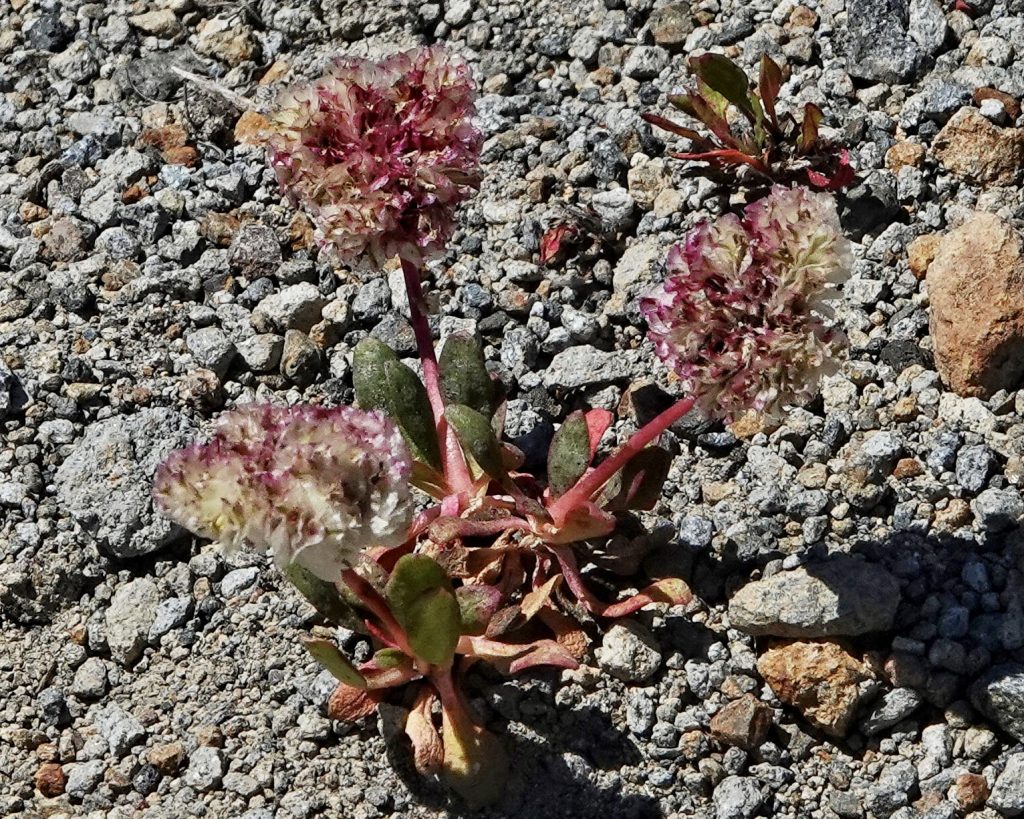
Description-Prostrate to low growing perennial forming rosettes from which a single inflorescence stalk arises; leaves are fleshy, all basal, spatulate with a broad petiole, 3/4-2” long; inflorescence is a dense umbel,up to 2” wide, on a stalk that is up to 4” tall; flowers 4 petaled, 3-8mm wide, white to pink to red, with red or yellow anthers.
Similar species–Calyptridium roseum has 2 petal Ed flowers; C. monosperma has longer, narrower leaves, multiple inflorescences from each rosette, and is only found in our region in sw Oregon/nw California.
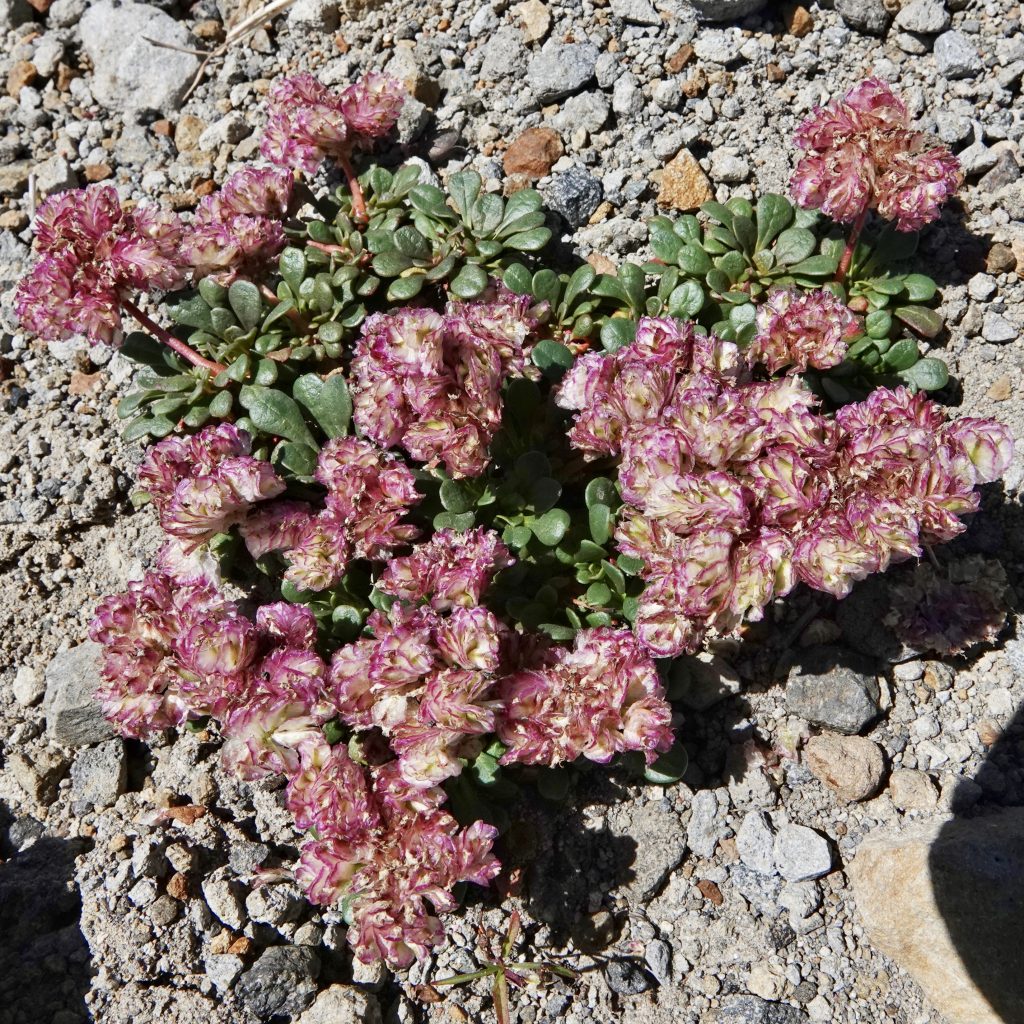
Habitat-Open ponderosa pine woodlands, and in sandy, open montane areas from 4000’ to high elevations.
Range-Native to western North America; in our region it is found in the Cascades, Siskiyous, Blues, Rockies, and Steens Mtn., but absent from the Coast Range and Olympics.
Reproductive timing-June-August
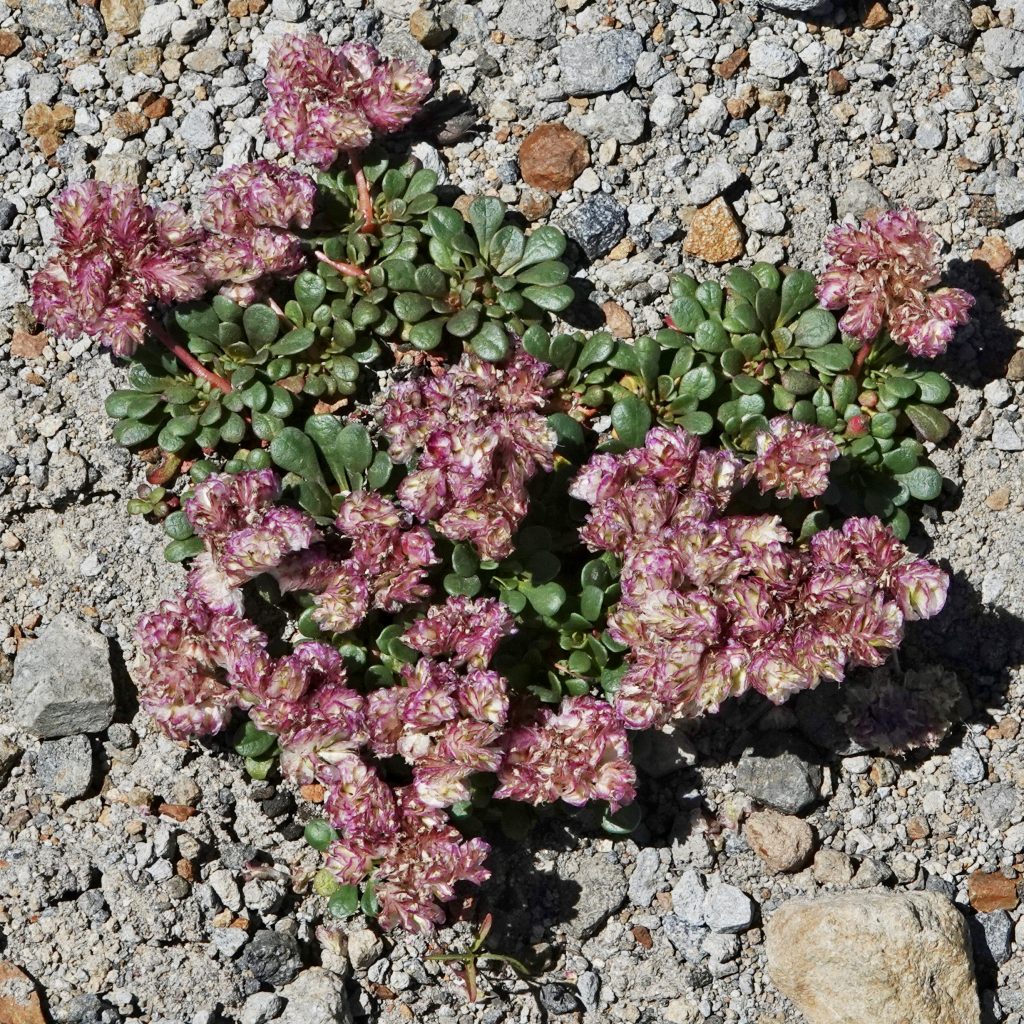
Eaten by-I can find no information about what may eat this, but as a succulent that is often found where not much else is growing, I would assume various herbivores utilize it for food; butterflies, flies, and beetles take nectar and pollen at the flowers.
Etymology of names–Calyptridium is from the Greek word for veil, and refers to the persistent sepals. The specific epithet umbellatum is from the Latin word for ‘sunshade’, and refers to the shape of the inflorescence.
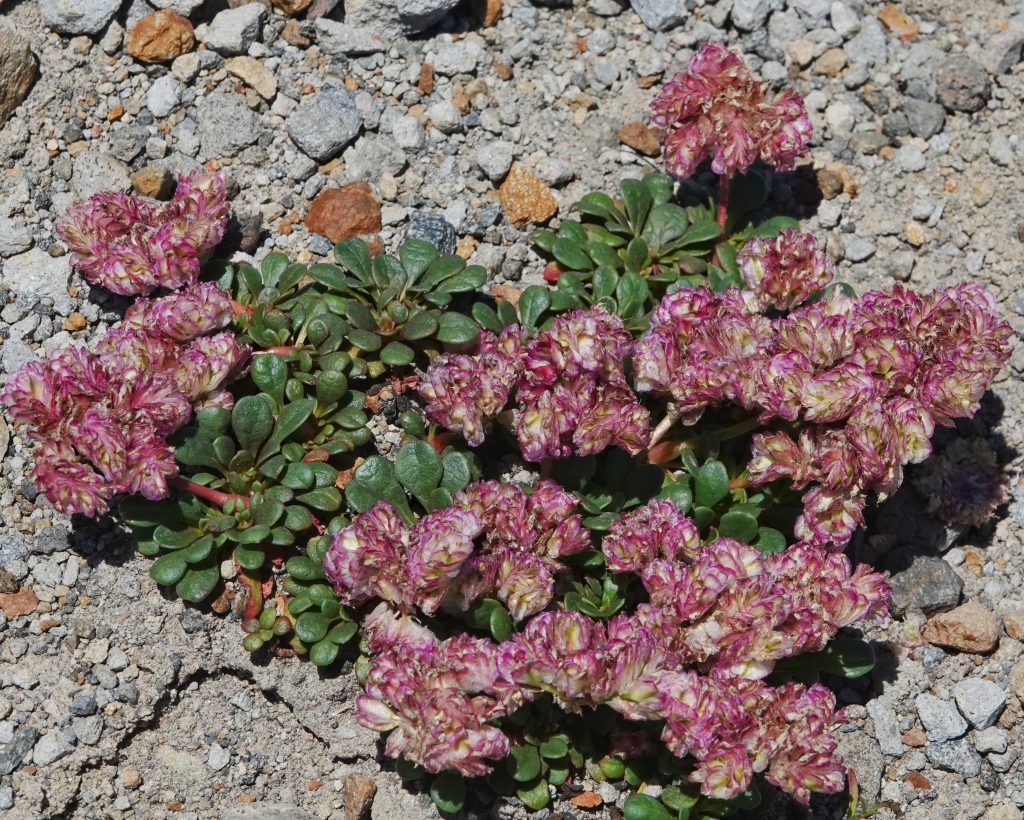
Burke Herbarium Image Collection
Cistanthe umbellata in Flora of North America @ efloras.org
Calyptridium umbellatum | Sevenoaks Native Nursery
Mt Hood Mock Pussypaws, Calyptridium Umbellatum
segregation of montiaceae from portulacaceae – Google Scholar

Dangit! There was a group of four of us on Mt Rainier just yesterday trying to identify this! If only I hadn’t been behind on my blog-reading. Ugh.
Glad to hear it eventually proved useful!